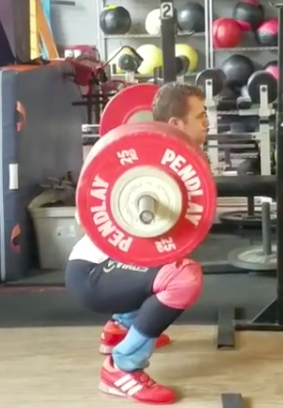You should always fit a program to an athlete. You should not fit an athlete to a program! One way that I like to customize my hypertrophy programming is through inverting the percentages.
Classic Programming Model
Classic percentage programming uses lower sets and higher reps in a hypertrophy phase. Athletes are typically doing 2-4 sets of 50-75% for reps of 8-15. This rep range allows for the three main mechanisms for muscle growth: mechanical tension, metabolic stress, and muscular damage to occur. (If you want to learn more about these mechanisms of growth, check out Mash Jacked. Travis covers it in extensive detail.)
[thrive_leads id=’8753′]
Through the classical model, the higher rep range of hypertrophy training really facilitates metabolic stress more than during any other phase of training (strength, speed, peaking, etc.). We experience the metabolic stress when we have the “pump”. There is an accumulation of hydrogen ions, lactate, and other metabolites that can promote muscle development.
Note from the author: Lactate does not cause soreness. Lactate is an energy source for the body during times of anaerobic exercise (not enough oxygen to meet the demands of activity). Foam rolling, massage, and other modalities do not “pump” any lactate out of the body. This is a myth that should be buried forever. Lactate is good and helps you perform. It is a fuel source!
Okay, now that I am done with my rant, we shall continue.
Although the classic model of lower sets and higher reps is good for building hypertrophy, it can impact the technique and performance of the athlete’s movement pattern. Especially someone who is new to the movement pattern.
For example, when you see a novice to intermediate athlete do a set of 10 in the squat you will notice that their last few reps do not look the same as their first few reps. They are fatigued and the motor patterns begin to go back to whatever form they are most comfortable doing. The body takes over and the brain shuts off. We often see the trunk shoot forward, the hips shoot back, and sometimes we even see that the back begins to round.
Inverted Percentage Programming
Instead of using the classical model, we can use an inverted percentage program to give these athletes the same amount of reps but give them more rest between reps. Instead of performing 3 sets of 10, you now are performing 10 sets of 3. The advantage of this is to allow your athlete to practice GOOD reps. The speed of these reps will be higher too. The carry over to a maximal lift will be higher as well.
Rest between these sets should be limited to 45-90 seconds. Since the athlete is doing sets of 3 with a weight they could do for 10 reps they will not need the same amount of rest as a working set of 10 reps. You will also notice that this type of training will keep the heart rate up in your athletes.
Mechanical tension and muscular damage will both be achieved during this type of training. The athlete may feel like it was an “easy” day, but as long as the total volume is equal to the classical model, they will feel it the next day! It often surprises most people after their first session.
With this type of training, you will not have as much of a metabolic stress effect on the muscle tissue. Most of the time the “pump” is best achieved when doing higher reps and less rest. It is important to supplement that with accessory work following the main exercise to perform all three mechanisms for muscular growth.
Progressions using the inverted percentage programming should be very similar to that of the classical model. You can increase by 5% load each week with a drop in the number of sets. Or you could increase the number of reps performed while keeping the number of sets and percentage used the same.
Give it a shot! I find it is used best for the strength movements especially the strict press.
[thrive_leads id=’8207′]
